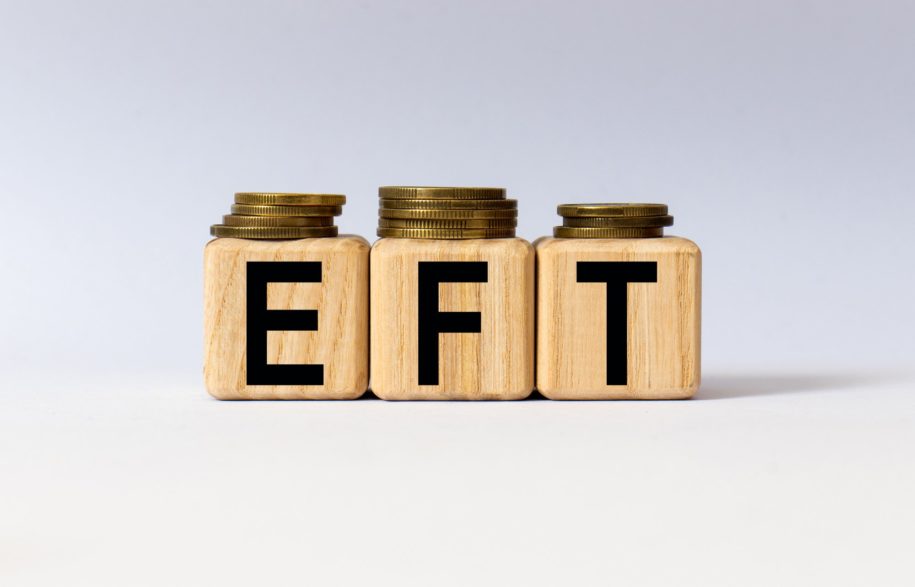An electronic funds transfer (EFT) is simply the electronic movement of money from one bank account to another. It is a blanket term that applies to any type of transfer of money that occurs electronically.
These types of payments have revolutionized the way people and companies do business. Rather than traditional methods of paying via cash or paper check, electronic funds transfers simplify the process and allow money to change hands very quickly — in some cases, instantaneously.
Sometimes, people compare EFT payments to ACH payments that are overseen by the Automated Clearing House Network. However, ACH transfers are simply one type of EFT transaction.
An ACH transfer generally occurs only within the United States — they don’t occur internationally. They are handled in batches between U.S. banks and often take a day or two to fully settle funds within the ACH network.
EFTs are governed by the Electronic Funds Transfer Act. This act is a regulation that was put in place to protect people who make EFT payments.
If an unauthorized transaction is deemed to have occurred, financial institutions must notify account holders. Account owners must also be provided with a summary of their rights as they pertain to EFTs.

What Are Some Types of EFT Payments?
Pretty much any payment that occurs electronically is an example of an EFT payment. A few of the most common types of electronic funds transfers are described below:
ACH Transactions
ACH transactions occur between two banks. To set up an ACH transaction, the banking information for the accounts must be provided. This information will include the routing number, bank account number, the date the transaction should occur, and the amount to be sent.
Commonly, ACH transactions are used to make direct deposits of payroll or to pay bills to specific entities, such as a utility company or rental agency.
Credit Card/Debit Card
Any time you use your credit or debit card, you are performing an EFT. Credit cards and debit cards are common payment methods used for everyday purchases, such as groceries, retail shopping, or dining out.
When a transaction occurs involving a POS system and your card, your bank will be notified to transfer the funds directly from your account to the seller’s. Debit cards are usually tied to a checking account, while credit cards are given to those who have a line of credit with a bank or credit union.
ATM Transactions
While EFT transactions are becoming the most common method of paying for goods or services, in some cases, people still need cash for certain items.
Your debit card can be used for withdrawals of funds through an ATM. When inserted into an ATM, the debit card communicates with the bank to allow you to withdraw money from your checking or savings account.
Electronic Money Transfers
Services such as Zelle, Paypal, and Venmo are commonly used to move money electronically. Once a transfer has been initiated using one of these payment systems, money is moved almost instantaneously.
In some cases, there are limits to the amount of money that can be sent through these payment processing systems. The limits may be set per day or per transaction, depending on the processor.
e-Checks
In some cases, businesses will accept e-checks (or electronic checks) for payment. This payment method is common for mortgage lenders or rental agencies.
When making a payment via e-check, you’ll be required to list the routing number and bank account number. You may also be required to list a check number. e-Checks operate similarly to paper checks, but the balance in your account may be validated before the check is accepted.
Online Banking
Many banks give their customers the option to handle their bank account information online. Customers can view their account balances and any debit or credit card transactions through an online portal.
Most banks also allow for recurring or one-time online bill payments that can be set up through the online portal. Once a customer indicates the banking details of the payee, they’ll be able to make regular payments to them without the need for paper checks.
Wire Transfers
Wire transfers are commonly used in the international banking world. They are typically more expensive than an ACH transfer, but they may be required to transfer money electronically between two international banks. Wire transfers usually occur immediately, although in some cases, they may take an extra business day to fully settle in the account.

How Do EFT Payments Work?
EFT payments can occur using a variety of different methods, but the end result is to transfer money from one bank account to another. The EFT may occur between accounts held in the same bank or between accounts held by two different banks. An EFT may be a domestic or an international transaction.
When an EFT payment is initiated, the amount of the payment to be made is indicated. Depending on the payment options used, additional information may be required.
For example, if an echeck is the means of an EFT, account information for the payer and payee will be required to process the transaction. Other methods may be more automated, such as a debit card transaction that occurs with the use of a point of sale machine.
What Are the Advantages of EFT Payments?
There are a number of advantages to using EFT payments as an individual and as a business. A few of these include:
Faster Processing Speed
An EFT is typically much faster than more conventional payment methods, such as a paper check. Since most of the payment process occurs through automation, less effort is required by the payer and payee. Payments can settle instantaneously or within the next business day. In contrast, a paper check can take several days for banks to transfer funds.
Paper checks also require more manual intervention. They may need to be mailed to an account servicer, leading to the potential for lost checks in the mail or interception of checks to gain access to the account information of a bank account.
Inexpensive to Process
EFT transactions are generally very cheap for companies to process. The cheapest forms of EFT transactions are e-checks and ACH transfers, which can occur for less than a dollar. Payment processors such as Zelle or Venmo are free to use, although they are generally used for personal expenses and transfers, not business expenses.
Wire transfers are the most expensive form of EFT, but they are reliable and quick. Since they are commonly used to handle international money transfers, they can be helpful for ensuring that funds are available and are transferred accurately.
Secure
EFTs are generally the safest way to initiate a payment or transfer funds. Since they occur via electronic means, there is generally no manual intervention required. Details of the transaction are stored electronically and handled via automated software.
In contrast, cash may be easily stolen from individuals or businesses. Checks contain bank account information, so unscrupulous individuals may record the details for other means.
The best way to ensure the security of your EFT is to use processors that you are familiar with and that you trust. You should also ensure that you protect the details of your account whenever you make an EFT.

What Are the Risks of EFT Payments?
As with any payment method, there is always the potential for risks. A few risks of using EFT transfers include:
Stolen/Lost Debit or Credit Cards
If a debit or credit card is lost, it’s important to notify the issuing financial institution as soon as possible. Under the EFTA, if the card is reported lost or stolen within two days, the user’s liability is limited to $50 for unauthorized transactions.
If the missing card isn’t caught within two days, liability for fraudulent transactions can still be limited if the card is reported missing within 60 days.
Unauthorized Transactions
For EFT transactions that do not arise from credit or debit cards, consumers are given up to 60 days to report fraudulent activity. If transactions are reported during this time, the user will not be held responsible for them while the bank investigates. However, the activity must be reported during the 60-day timeframe to avoid liability.
HappyAR is a seamless SaaS that quickly and easily boosts your accounts receivables work. We have simple monthly pricing that includes unlimited users and unlimited invoice escalations. There's no long-term contract, and you can try HappyAR for free.

